| Columns Retired Columns & Blogs |
Editor,
would the description or the plots on the figures 2 and 3 changed from one to each other?
I used my sample of the top-of-the-line Audio Precision SYS2722 system (see the January 2008 "As We See It" and www.ap.com) to measure the Raven Spirit 300B Reference Stereo. I installed the tubes using the revised guide that had been sent to Art Dudley; the output tubes were the pairs of Sophia Electric Royal Princess 300Bs he'd used in his auditioning. As the XLR jacks are connected with pin 2 in parallel with the RCA jacks, I performed all measurements using RCA cables to connect the amplifier to the Audio Precision, and ran the amplifier driving 1kHz at 1Wpc into 8 ohms for two hours before examining its performance. The needles on the front-panel meters were at 1:00 at this power level.
The Raven Spirit preserved absolute polarity from both its 4 and 8 ohm output-transformer taps (ie, it was non-inverting). The voltage gain at 1kHz into 8 ohms was 26.23dB from the 4 ohm tap, 28.83dB from the 8 ohm tap. These figures were for the left channel; the right channel's output levels were 0.22 and 0.35dB higher, respectively. The input impedance was usefully very high at all audio frequencies: at least 200k ohms. (I can't be more precise, as the voltage-drop method I use loses precision with impedances greater than 100k ohms.) At low and middle frequencies, the output impedance was relatively low for what looks like a classic tubed design: 0.53 ohm (4 ohm tap) and 1 ohm (8 ohm tap). However, the output impedance rose drastically at the top of the audioband, to 2.1 ohms (4 ohm tap) and 4.1 ohms (8 ohm tap).
As a result of this rise in output impedance, the Spirit's frequency response dropped like a stone above a few kHz. Fig.1 shows the response from the 8 ohm tap; the gray trace shows the variations in response that resulted from the interaction between the amplifier's output impedance and the manner in which the impedance of our standard simulated loudspeaker varies with frequency. These variations reach a moderate ±1dB but, more important, the response is down by almost 7dB at 20kHz into 8 ohms (blue and red traces) and by almost 10dB into 2 ohms (green trace). This results in a poor-looking 10kHz squarewave (fig.2) with long risetimes and significant waveform asymmetry. The behavior was very similar from the 4 ohm tap (fig.3), but with less variation in response with the simulated loudspeaker. However, an ultrasonic peak appears in the response at 55kHz. Though this peak is 16dB below the reference level at 1kHz, it does result in a small amount of overshoot and ringing with a 1kHz squarewave (fig.4).
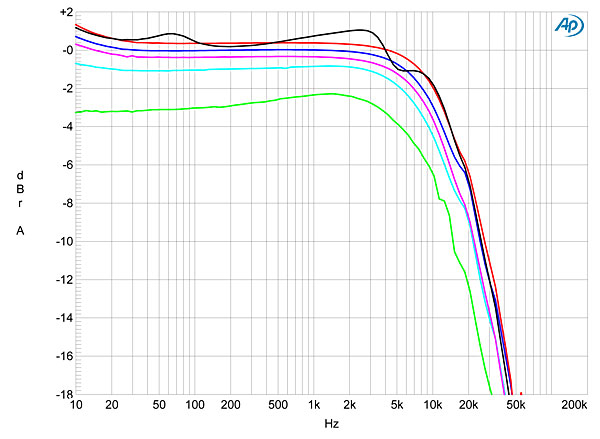
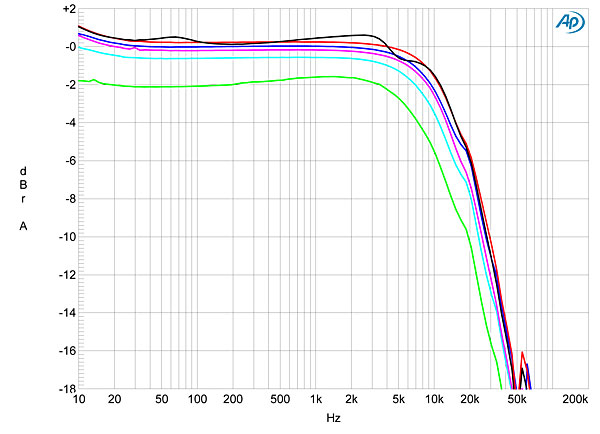
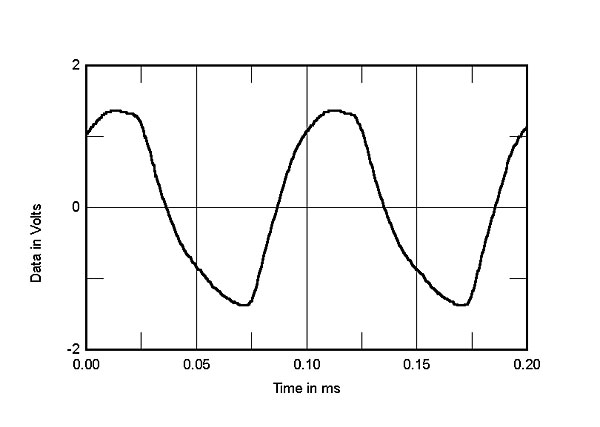
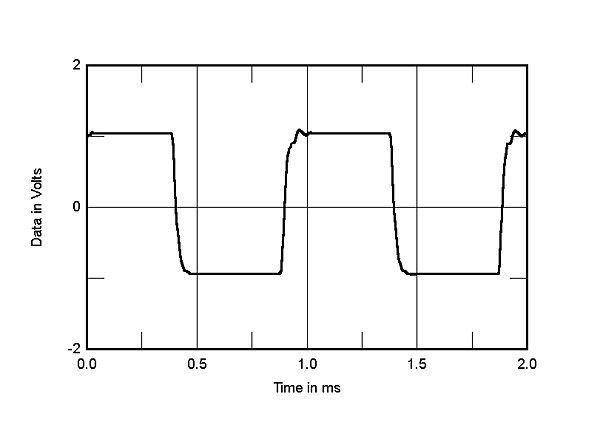
Channel separation (not shown) was good, at >80dB in both directions below 3kHz, and still 70dB at 20kHz. However, the unweighted, wideband signal/noise ratio, ref. 1W into 8 ohms and taken from the 8 ohm output with the input shorted, was modest, at 66dB in the left channel and 64.9dB in the right. Switching in an A-weighting filter improved these ratios to 79dB and 77.1dB, respectively—but, as can be seen in fig.5, the unweighted ratio is affected by a series of AC-supply–related hum components that AD found to be audible. (I didn't adjust the hum-bucking pots before the measurements; the absence on Raven's website of information about how to do it made this adjustment difficult.)
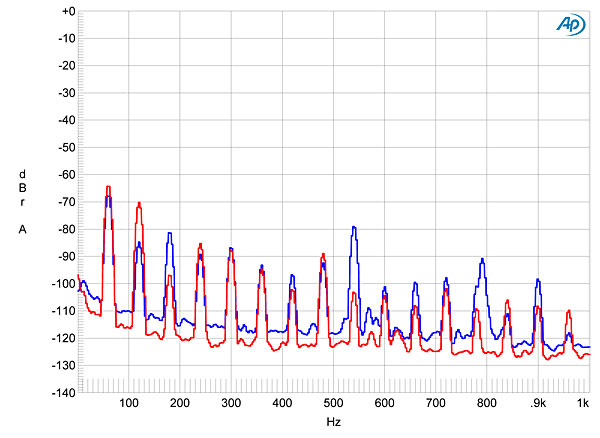
On its website, Raven specifies the Spirit 300B's maximum output power as 36W, which is equivalent to 15.6dBW into 8 ohms. However, estimating this amplifier's maximum power was problematic, as it depended very strongly on which output-transformer tap was being used, and what load impedance the Spirit was being asked to drive. Figs. 6–9, for example, plot the percentage of THD+noise in the amplifier's output against output power into, respectively, 16, 8, 4, and 2 ohms, measured at the 4 ohm output-transformer tap. We define clipping as occurring when the THD+N reaches 1%. These graphs reveal that the Spirit's 4 ohm tap clipped at 14.5W into 16 ohms, 25W into 8 ohms, 2.25W into 4 ohms, and 820mW into 2 ohms. Relaxing the definition to 3% THD+N gave clipping powers of 16W (15.6dBW), 27.5W (14.4dBW), 31W (11.9dBW), and 1.5W (–4.3dBW), but with increasingly high levels of distortion above a few watts as the impedance drops. The only condition in which the Spirit 300B managed to output the specified 36W was when the 4 ohm tap drove 4 ohms with no less than 10% distortion (fig.8); with the 4 ohm tap driving 2 ohms, the distortion remained above 3% at all powers above 1.5W (fig.9). The situation was very similar from the 8 ohm tap, but with the load impedances doubled, of course (fig.10).
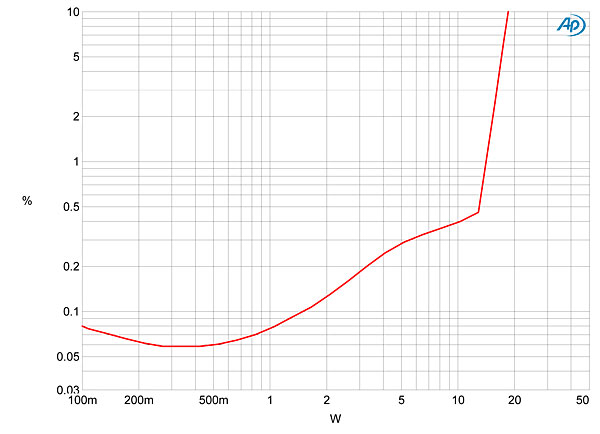
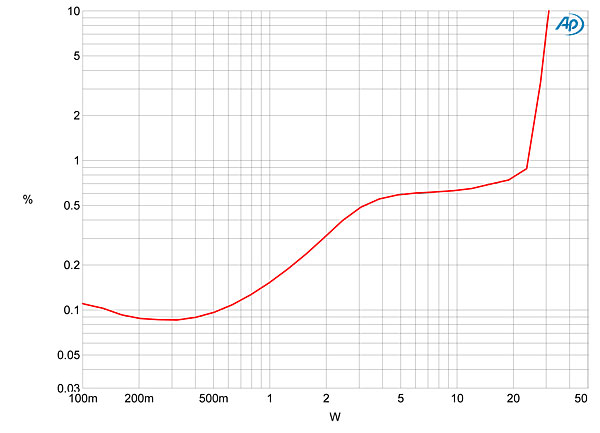
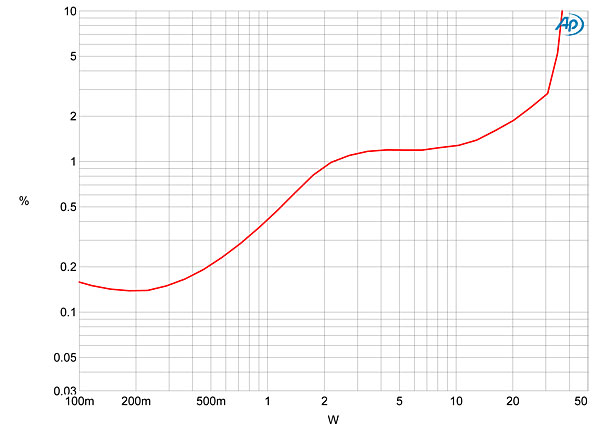
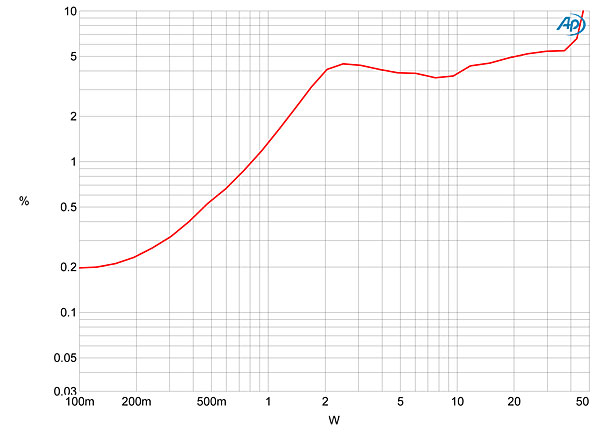
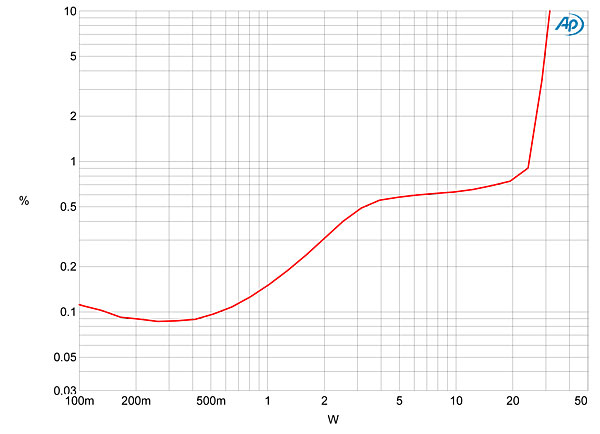
It's fair to note that when the load impedance is much higher than the nominal tap impedance, the distortion percentage is respectably low below 2W or so. This can be seen in fig.11, which plots the percentage of THD+N against frequency for the left channel's 4 ohm tap driving 16 ohms (gray trace), 8 ohms (blue), 4 ohms (magenta), and 2 ohms (red), at 2.83V, which is equivalent to 1W into 8 ohms. The 8 ohm tap behaved very similarly (fig.12), but with approximately twice as much distortion as the 4 ohm tap into the same load. The rise in THD+N at low frequencies in figs.11 and 12 will be due to the onset of core saturation in the output transformer; the rise at high frequencies will be related to the increased output impedance and the associated ultrasonic rolloff.
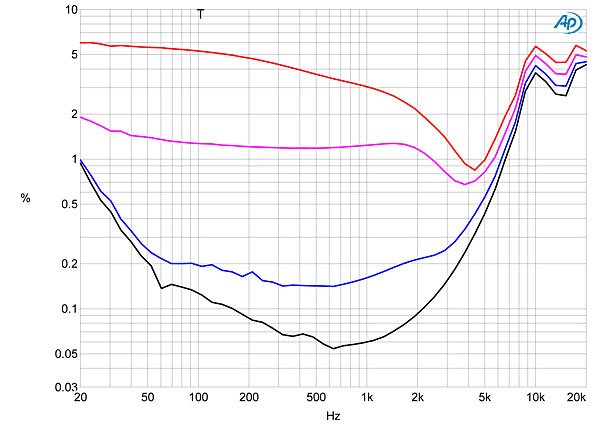
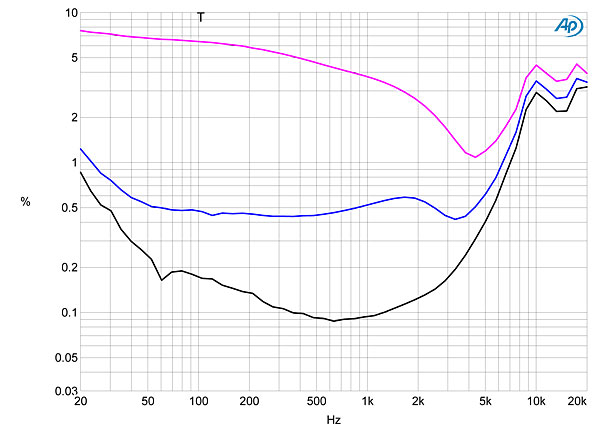
The distortion consists primarily of low-order harmonics (fig.13), with the third harmonic the highest in level in the left channel (fig.14, blue trace), and the second harmonic the highest in the right channel (fig.14, red). With the circuit's restricted high-frequency linearity, the Spirit's performance on the high-frequency intermodulation test (fig.15) was dreadful—even at 1W into 8 ohms from the 4 ohm tap, the difference component at 1kHz and the higher-order products at 18 and 21kHz all lay at –43dB (0.7%).
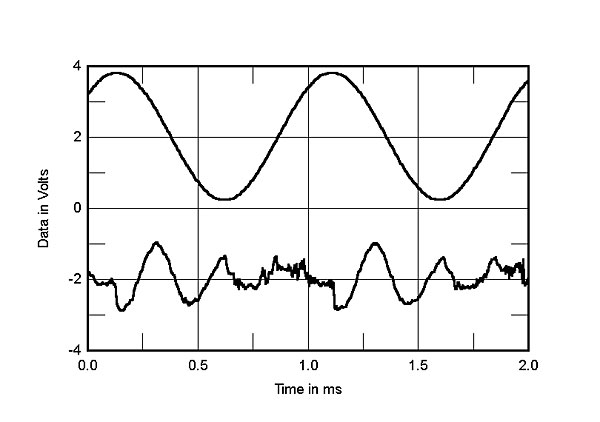
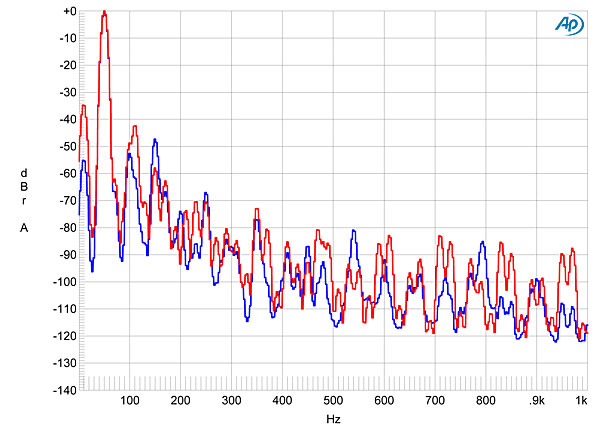
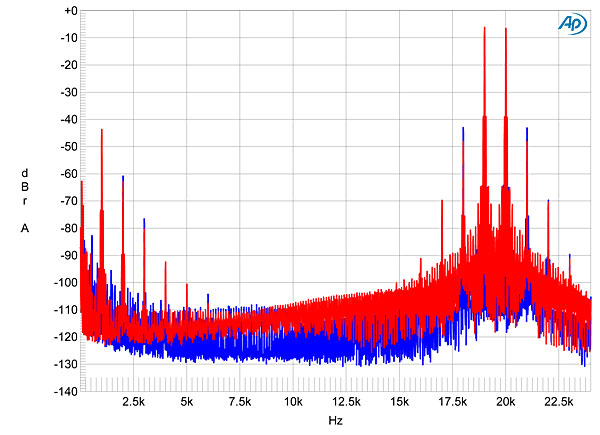
As bad as the Raven Spirit 300B Reference's measurements look overall, the amplifier's poor linearity will not be an issue when its 4 ohm tap is used to drive 16 ohm loudspeakers, particularly if those speakers are of high sensitivity. For example, the DeVore Fidelity O/96 that AD used with these amplifiers has both a high measured sensitivity of 91dB(B)/2.83V/m and an unusually high impedance averaging 10 ohms. However, you're still left with the rolled-off top octave—perhaps less of an issue with the O/96, where the shape of the impedance curve (footnote 1) will boost the mid treble—and the hum. This is a shame, as the amplifier is beautifully made and equally beautiful looking.—John Atkinson

Editor,
would the description or the plots on the figures 2 and 3 changed from one to each other?

i am the proud owner of raven audio amplification. "THE RAVEN" a 3oob tube based integrated amplifier. There can be no better amplification in the world. You see right thru the music. Your are drawn into it. All the details of the recording are there.Is there colorization by the tubes? Not sure.i can only tell you the music sounds exactly as intended and as natural and neutral as can be.it is rated at 15 watts per channel..Some may not understand. Raven audios 10 watts,is another tube companies 40 watts and solid states 80 watts. It is in the power supply and voltage regulation that all the power of god on earth is unleashed. the power is more than enough to fill my 20x 20 room with blasting clear,warm glorious sound. i have owned mcintosh,krell ,NAD AND MARK LEVINSON. There really isnt anything but maybe my old mac that sounds even close to the raven. andy rothman sharethemusic@aol.com